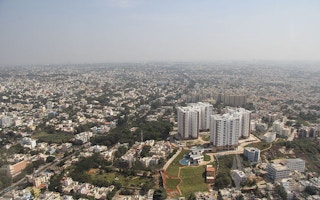Humanity is migrating to cities. More than half of the world’s human population now lives in urban settlements, and by 2050, nearly 70 per cent of people will live in cities, according to a report released by the United Nations in 2014. But is there space for nature in this rapidly urbanising world?
A new book titled Nature in the city: Bengaluru in the past, present and future, written by urban ecologist Harini Nagendra, looks into nature in cities, and the increasingly important role natural areas play in influencing access to clean water and air, food, recreation, cultural and spiritual needs, and relief from stress.
Nagendra is currently a Professor of Sustainability at Azim Premji University in Bengaluru.
By digging into the city’s dynamic past, Nagendra provides a gripping narrative of how Bengaluru’s inhabitants have constantly molded and re-molded the city’s boundary and landscape over the past few centuries. Bengaluru hasn’t always been a pristine landscape of beautiful gardens and lakes, Nagendra illustrates in the book. In fact, the city has had a turbulent past with constantly changing boundaries and relationship with nature.
Understanding a city’s history is important, Nagendra says, because it helps us shed light on how nature thrived and failed in the past, how that compares with the present, and how that could shape the future of the city and its people.
Nagendra’s extensive research spanning nearly a decade shines through the book. She deftly navigates a rich mix of data including archival documents, maps, epigraphic inscriptions on rocks and copper plates, as well as interviews street vendors, children, residents of slums and high-rise apartments, government representatives and corporate managers to demonstrate Bengaluru’s tumultuous relationship with nature.
The book takes its readers through the evolution and role of Bengaluru’s home gardens, public parks, village forests, sacred groves, and trees lining the city’s roads. Not only do these green spaces host diverse wildlife, Nagendra writes, they offer a number of vital functions. Bengaluru’s wooded streets, for example, have been shown to keep surface temperatures down, and reduce concentration of harmful pollutants in the air.
Nagendra’s book also delves into the changing face of Bengaluru’s rich network of lakes, many of which have been lost to urban development. However, instead of losing hope, the book cites examples of citizen-run initiatives that are saving many of the city’s wetlands and lakes from decay.
Nature in the city is a compelling look into a city’s relationship with nature, one that is likely to resonate with people from across the world.
Mongabay spoke with Harini Nagendra about her new book. Read the Q&A here.
This story is published with permission from Mongabay.










